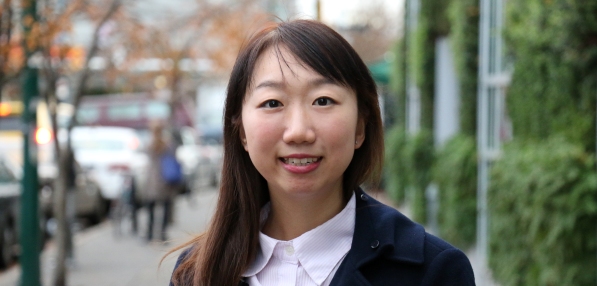The first face they see
Maya Angelou once said that people will forget what you said or did, but they’ll never forget how you made them feel. For Yeonjoo Kwon and countless others around the world, this quote reflects everyday life as a nurse.
As a registered nurse at Lions Gate Hospital, Yeonjoo is the often the first face patients see when they come out of the surgical recovery room. Many of them are hazy and vulnerable, and counting on nurses like Yeonjoo to make them feel safe, reassured and comfortable.
Providing patients with the best quality care is why Yeonjoo became a nurse. It’s also why she’s excited about the benefits we will get through the Clinical & Systems Transformation (CST) project.
“I believe CST will transform our healthcare system to a whole new level,” says Yeonjoo. “We are living in the 21st century, and technology has become part of our lives. CST is the answer to the question: Why aren’t we taking full advantage of technology in healthcare?”
Working in General Surgery, Yeonjoo says seamless, instant access to patient data – including charts, lab results and medical imaging – using the new clinical information system will improve care and efficiency.
She’ll be able to view a patient’s chart before she sees them, which will allow her to make organized plans of care. Yeonjoo adds that CST is all about sharing medical records in one system, helping healthcare providers to make faster and more informed decisions.
If a patient is delirious following their operation, infection and sepsis need to be ruled out. Healthcare providers will look at lab values and test results and monitor vital signs, then report to the physician so they can make clinical decisions and provide orders.
Today, physicians can’t access vital signs from a computer and depend on nurses like Yeonjoo to inform them. Through CST, nurses will be able to report vital signs and other assessments in the patient’s electronic chart – which the doctor can view from wherever they are in the hospital.
And since the clinical information system is shared between the three Health Organizations, patients can be transferred more easily because healthcare professionals can collaborate in their care.
Yeonjoo says there are other benefits too.
“Based on collected data, if we found out there was a higher incidence of post-op delirium in certain type of surgical patients, we could strive to lower the incidence by eliminating contributing factors.”
Yeonjoo knows change can be scary, but she believes CST will deliver positive benefits that reinforce why she got into nursing in the first place: to make her patients feel like they received the best possible care.
“I really honestly believe that CST will bring about a better future in our healthcare system.”
Background information
• CST is a joint initiative of VCH, PHSA and PHC, and one of the largest and most complex healthcare projects in Canada. It spans across several areas of the continuum of care, including: acute care inpatient and outpatient units and ambulatory care. As well as creating consistent, leading practices, and a shared clinical information system, CST will deliver HIMSS Level 5 functionality.
• Clinical design teams, made up of hundreds of highly-skilled, multi-disciplinary professionals from across the three Health Organizations and Team IBM (experts from IBM Technical Services, Deloitte, Leidos Solution Builders and the University of Pittsburgh Medical Centre), started work on April 7, 2014. These teams are tasked with designing our future workflows, based on leading practices. In doing so, they are defining the requirements for our new clinical information system.
For more information, please contact Donna Stanton, CST Executive Director/Transformation Lead, VCH at donna.stanton@vch.ca. If you have questions or feedback, please email info@CSTproject.ca.

